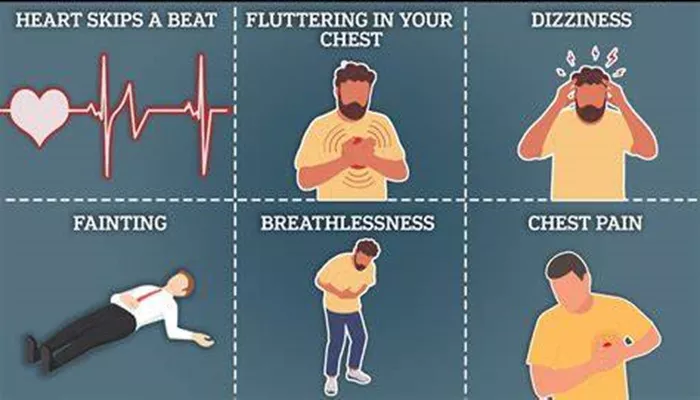Sudden cardiac death (SCD) is a significant public health concern, representing a major cause of mortality worldwide. It is defined as an unexpected death due to a cardiac cause that occurs within one hour of the onset of symptoms. Arrhythmias, which are irregular heartbeats, are the primary mechanism behind SCD. Understanding the relationship between arrhythmias and sudden cardiac death is crucial for improving prevention, diagnosis, and management strategies.
Understanding Sudden Cardiac Death
Sudden cardiac death accounts for approximately 15-20% of all deaths globally, with estimates suggesting 180,000 to 300,000 cases annually in the United States alone. The majority of these deaths occur in individuals with underlying heart disease, particularly coronary artery disease. However, a significant number of cases arise in individuals without prior known heart conditions, highlighting the need for better risk stratification and preventive measures.
The most common arrhythmias associated with SCD include ventricular fibrillation (VF) and ventricular tachycardia (VT).
These arrhythmias disrupt the heart’s ability to pump blood effectively, leading to a rapid loss of consciousness and, if not treated promptly, death. The rapid onset of these arrhythmias often leaves little time for intervention, making early recognition and treatment critical.
SEE ALSO: What Tests Do Electrophysiologists Use to Diagnose Arrhythmia
The Mechanisms of Arrhythmias
Arrhythmias can be classified into several categories based on their origin and characteristics. The two main types relevant to SCD are:
Ventricular Arrhythmias: These originate in the ventricles and include ventricular tachycardia and ventricular fibrillation. VF is particularly lethal, as it results in ineffective quivering of the heart muscle, preventing it from pumping blood.
Atrial Arrhythmias: These originate in the atria and include atrial fibrillation (AF) and atrial flutter. While AF is more commonly associated with stroke risk, it can also contribute to SCD, particularly in patients with other cardiovascular conditions.
Risk Factors for Arrhythmias And Sudden Cardiac Death
Several risk factors contribute to the development of arrhythmias, which in turn increase the risk of sudden cardiac death.
These include:
Coronary Artery Disease: The most common underlying cause of SCD, coronary artery disease can lead to myocardial ischemia, which increases the likelihood of arrhythmias.
Heart Failure: Patients with heart failure are at a significantly increased risk of developing arrhythmias due to structural and electrical changes in the heart.
Previous Myocardial Infarction: A history of heart attack can lead to scar tissue formation, which can disrupt the heart’s electrical pathways and promote arrhythmias.
Hypertension: High blood pressure can lead to left ventricular hypertrophy and other structural changes that predispose individuals to arrhythmias.
Genetic Factors: Certain inherited conditions, such as Long QT syndrome and Brugada syndrome, can increase the risk of life-threatening arrhythmias and SCD.
Lifestyle Factors: Smoking, excessive alcohol consumption, and lack of physical activity can contribute to the development of cardiovascular disease and arrhythmias.
The Role of Atrial Fibrillation
Atrial fibrillation is the most common sustained arrhythmia and has been associated with an increased risk of sudden cardiac death. While the exact mechanisms remain unclear, several factors may contribute to this association:
Increased Heart Rate: AF often leads to a rapid heart rate, which can increase myocardial oxygen demand and precipitate ischemia, especially in patients with underlying coronary artery disease.
Thromboembolic Events: AF increases the risk of stroke and other thromboembolic events, which can lead to sudden death if a significant embolism occurs.
Underlying Heart Disease: Many patients with AF have other risk factors for SCD, such as heart failure or previous myocardial infarction, complicating the relationship between AF and SCD.
Diagnosis of Arrhythmias
Diagnosing arrhythmias typically involves a combination of patient history, physical examination, and diagnostic tests. Key diagnostic tools include:
Electrocardiogram (ECG): This is the primary tool for diagnosing arrhythmias. It records the electrical activity of the heart and can reveal abnormal rhythms.
Holter Monitor: A portable ECG device worn for 24 hours or longer to capture intermittent arrhythmias.
Event Monitor: Similar to a Holter monitor but used for longer periods to capture infrequent arrhythmias.
Electrophysiological Study: A specialized test that involves inserting catheters into the heart to map its electrical activity and identify the source of arrhythmias.
Management of Arrhythmias And Prevention of Sudden Cardiac Death
Management strategies for arrhythmias focus on restoring normal heart rhythm and preventing SCD. Treatment options include:
Medications: Antiarrhythmic drugs can help control heart rhythm and prevent the occurrence of arrhythmias. Commonly used medications include beta-blockers, calcium channel blockers, and sodium channel blockers.
Cardioversion: This procedure involves delivering a controlled electric shock to the heart to restore a normal rhythm. It can be performed electrically or pharmacologically.
Catheter Ablation: This minimally invasive procedure targets and destroys the areas of the heart responsible for abnormal electrical signals, particularly in cases of atrial fibrillation and ventricular tachycardia.
Implantable Cardioverter Defibrillator (ICD): For patients at high risk of SCD, an ICD can be implanted. This device continuously monitors the heart’s rhythm and delivers shocks if a life-threatening arrhythmia is detected.
Lifestyle Modifications: Encouraging patients to adopt a heart-healthy lifestyle can reduce the risk of arrhythmias and SCD. This includes regular exercise, a balanced diet, smoking cessation, and managing stress.
Conclusion
The relationship between arrhythmias and sudden cardiac death is complex and multifaceted. While arrhythmias are a leading cause of SCD, understanding the underlying risk factors and mechanisms is essential for effective prevention and management.
Continued research into the pathophysiology of arrhythmias, improved screening methods, and public health initiatives focused on early intervention can help reduce the incidence of sudden cardiac death. By enhancing awareness and education regarding the signs and symptoms of arrhythmias, healthcare providers can play a critical role in saving lives and improving outcomes for patients at risk of SCD.


